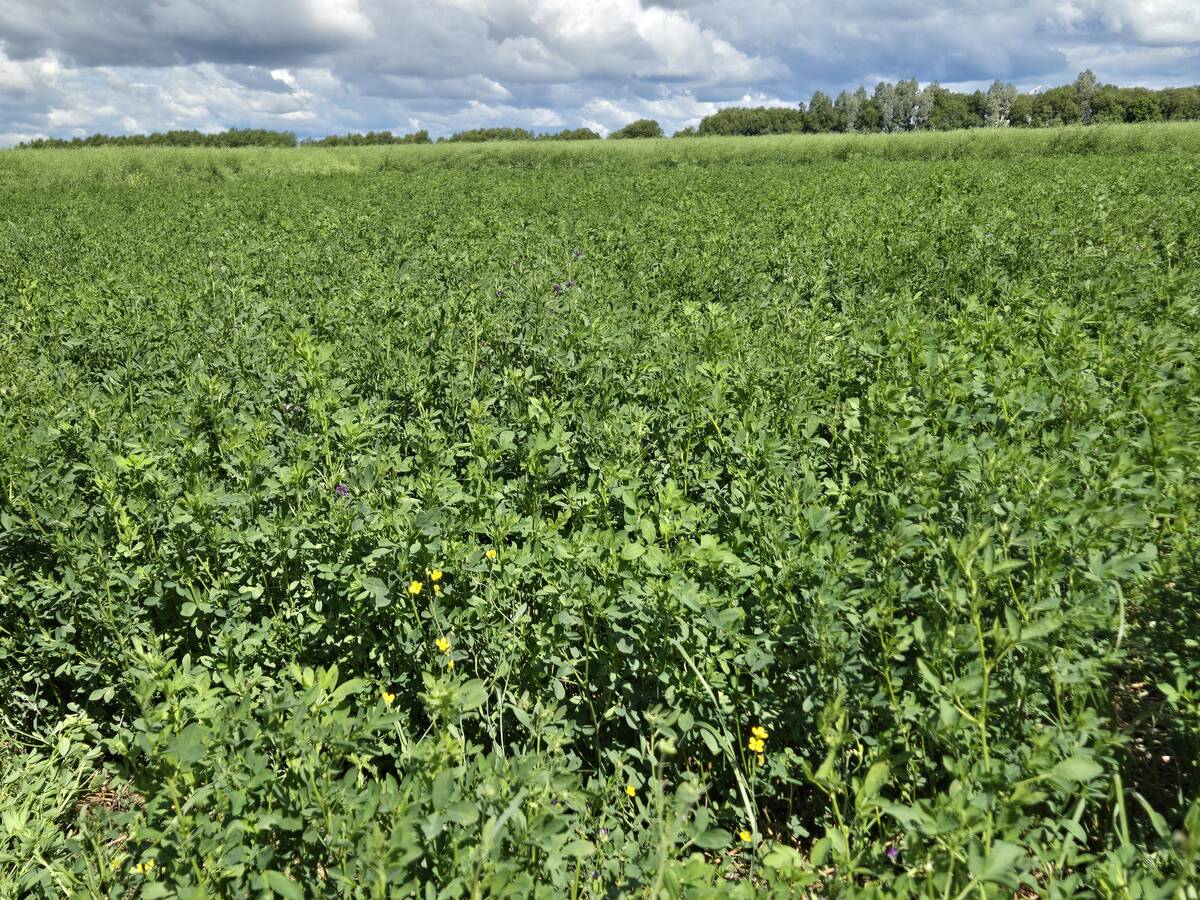Not everybody so lucky Wheat midge and too much heat may have caused problems in some areas
Timely rain during the growing season and great weather during harvest have created some of the best crops in parts of Alberta’s Peace River region.
“It’s the easiest harvest we’ve had in my little farming career,” said Greg Wieben, of Fairview.
“After the first 2 1/2 weeks we were wanting rain to have a break.
“We did all the wheat without rain, that is rare,” said Wieben, who estimated his wheat averaged 55 bushels per acre.
Canola on the farm ranged from 35 to 65 bu. per acre. The hot, dry harvest weather pushed canola moisture to close to six percent.
Read Also

Manitoba Parkland research station grapples with dry year
Drought conditions in northwestern Manitoba have forced researchers at the Parkland Crop Diversification Foundation to terminate some projects and reseed others.
Wieben said he welcomed the recent rain to bump canola moisture levels back to around 10 percent.
The family has about 50 acres of late-seeded canola yet to harvest.
“I was planning on seeding barley, but I had canola in my drill,” said Wieben, of his late-seeded crop.
Paul Schoorlemmer of Rycroft said harvest is slower than normal be-cause of the heavier crop.
“We had some pretty good growing conditions. We had a lot of showers and a lot of timely rains. At no point did we have too much rain.
“Moisture levels were pretty close to ideal all summer long and because of that, the crop is well above average.”
Schloorlemmer said hard red spring wheat ranged from 70 to 75 bu. per acre and Canadian prairie spring wheat ranged from 80 to 90 bu. per acre with a range of protein levels.
Peas averaged about 70 bu. per acre and canola yields about 50 bu. per acre, he said.
“Every spring, you have hope of a really good crop coming off in good condition. The price has tailed off, but the volumes are more than making up for some of the drop in price.”
The biggest concern now is weather with good harvest weather in October not guaranteed.
“It’s always a concern about weather until you’re done.”
However, the story on Ray Blanchette’s farm, west of Girouxville, is different.
“Canola was either really good or bad because of too much moisture or too much heat at the end,” said Blanchette, who struggled with weeds in his canola because he couldn’t spray at the proper time.
What he thought was an estimated 60 bu. per acre wheat crop turned out to be an 18 bu. crop. He blames wheat midge as the probable cause.
His wheat yields range from 22 to 32 to 36 to 55 bu. per acre depending on the field.
He doesn’t know why the one field yielded 55 bu. per acre, but he said he may have unknowingly killed the wheat midge while spraying for grasshoppers.
The only indication it may have been wheat midge is the flecks of orange on the combine.
“At harvest you were either pleasantly surprised or very unpleasantly surprised,” he said.
“I thought it was a 50 or 60 bushel crop. If you look at stubble, it looks fantastic in places, but the yields just weren’t there.”
Blanchette’s canola yielded 36 bu. per acre on one field and 28 bu. on another.
He has about 240 acres of canola left and is hoping it yields 30 to 40 bu. per acre.
















